Share
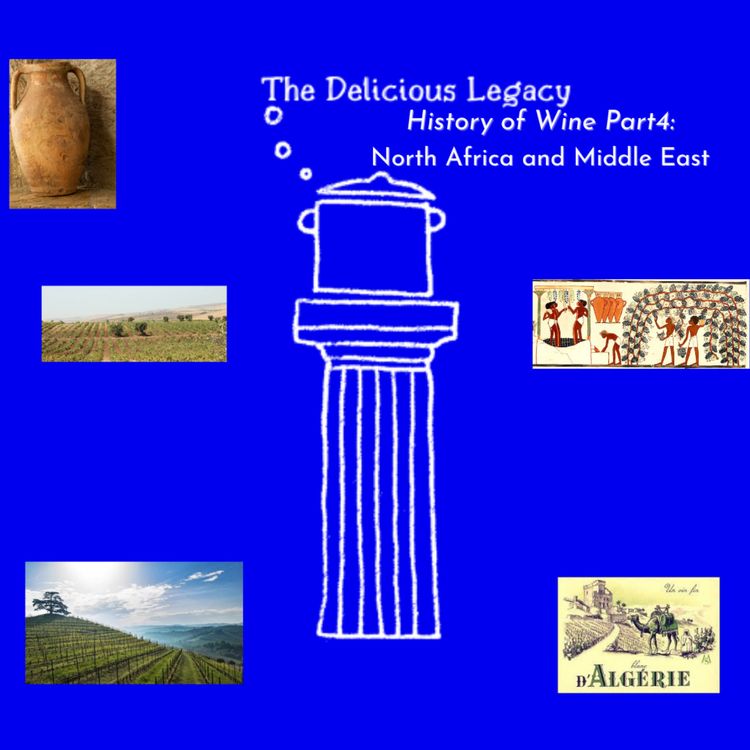
The Delicious Legacy
Wine in North Africa and the Middle East: History of Wine Part Four
An interview with Aghiles Ourad from the project The Other Grape.
From around 800 BCE ancient Phoenician merchant sailors created commercial hubs and trading stations all over North Affrica and Spain. Doubtless they exported their wine making and grape growing there more than 2600 years ago...
The Mediterranean is for all intends and purposes a lake as much as a sea. The trade and commerce of the peoples living on her shores happened through the sea for millennia. The climate is very similar and the exchange of ideas, foods, and culture almost free-flowing.
And yet, nowadays, when we talk about wine we only think of French, Spanish, Italian, perhaps Greek and ...that's about it! We completely forget the other half of the Med. The southern shores, the lands of North Africa and the Middle East. A vast area of any fertile lands, that played important roles in the rise and fall of countless empires! The grape was first cultivated and wine drunk in the East. In the Anatolia lands, in modern Turkey but also in Iran and Iraq, and Lebanon. Ancient Egypt too, had a very important wine production.The proper old, old world wines!
Why this blindness persists in our globalised age? And what is the colonial legacy of the wine making and vine growing on these lands?
Yet today we tend to ignore of the wine production of the predominately Muslim countries. Well today we'll try and rectify that!
I hope you'll enjoy our discussion!
Thom & The Delicious Legacy
Music by Pavlos Kapralos
Aghiles wine adventure is https://theothergrape.co.uk/
Support the podcast on Ko-Fi and Patreon for ad-free episodes!
More episodes
View all episodes
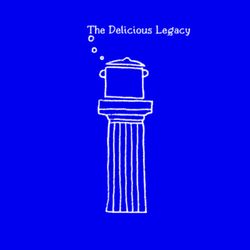
Recipe of The Week Three: Kalymnos Octopus Fritters
06:01|Hello!Happy Christmas!Here's your recipe of the week this time from the beautiful Dodecanese island of Kalymnos!Enjoy!With music from Miltos BoumisLoveThom & The Delicious Legacy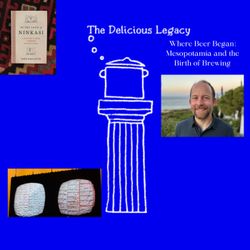
21. Where Beer Began: Is the Mesopotamian Origin Story Correct & The Birth of Brewing
49:49||Season 7, Ep. 21Hello my curious archeaogastronomers!Who were the first beer makers? Why did they even made beer in the first place? Can we even find a Civilization to be the clear winner in this "race"? What's the word for beer in ancient Sumerian?What role the priests and kings plaid in this? Who even drunk beer in the ancient Mesopotamian world? All this and many more questions were buzzing through my mind.On today's episode I have as a guest the author of the book In The Land of Ninkasi: A History of Beer in Ancient Mesopotamia, Tate Paulette.Tate’s book has recently won two awards:Felicia A. Holton Book Award, Archaeological Institute of AmericaThis award is given annually to a writer or writers who, through a major work of non-fiction, represents the importance and excitement of archaeology to the general public. The work should have broad public appeal and be written for an adult lay audience in a clear and engaging style. It should convey the excitement of archaeological discovery accurately and responsibly. It should be well-researched and provide new insight for the general public. https://www.archaeological.org/2026-aia-awards-spotlight-felicia-a-holton-book-award/And he also won the Nancy Lapp Popular Book Award, American Society of Overseas Research:This award is presented to the author/editor of a book published in the last two years that offers a new synthesis of archaeological or textual evidence from the Ancient Near East and Eastern Mediterranean intended to reach an audience of scholars as well as students and the broader public.https://www.asor.org/about-asor/honors-awards/previous-award-recipients/Alright! Time for my delightful and interesting I hope recommendations for this week are the following:Disco scallops:Here’s a link:https://www.discoscallops.co.uk/A Spirit Never to Betray” before tequila and mescal there was another: David Lauer investigates the fate of a spiky ancient desert plant called sotol, and its alliance with generations of artisans who distil a fiery spirit from its heart.https://dark-mountain.net/a-spirit-never-to-betray/And finally the website https://www.ukrainer.netA community and organisation that has been researching Ukraine and the Ukrainian context since 2016, telling stories to Ukrainian audiences and broadcasting them to the world in dozens of languages.xEnjoy!Photo credits : Book Tate Paulette, Cuneiform Tablets Justin Kase Conder, Portrait Kathryn GrossmanThom & The Delicious Legacy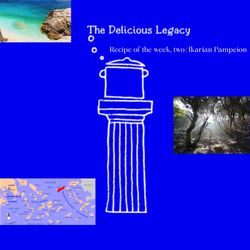
Stocking fillers: Recipe of the week, two: Ikarian Pampeion
06:51|Hello!Every Saturday in The Delicious Legacy podcast your freshest "stocking filler" recipe of the week is out!This time I’m travelling to the delightful island of Ikaria in the Western Aegean sea!With a simple one pot veg recipe!If you want to know more about Ikaria, read my Patreon post here:https://www.patreon.com/posts/ikaria-island-of-115744979Music by Milts BoumisLove,The Delicious Legacy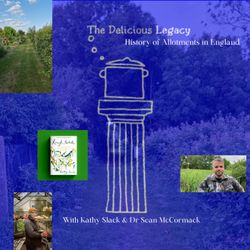
20. A History of Allotments in England
47:08||Season 7, Ep. 20Hello!New episode is out now!Why England and by extension all of UK is so allotment "obsessed" ? What does it all mean?Firstly, what is an allotment? When did it all started?As someone who moved in UK many years ago, seeing this lovely spaces in cities filled me with a sense of serenity, and an air of quaint old school happiness lets say, they evoked something romantic and from long lost era. Of course over the years I learned a lot about why these exist; what purpose and role fulfil in the society and the soul of the nation.Who has one, who are they owned and maintained by, and crucially why people still insist having? What is the source of their popularity?Importantly, can one person/family feed themselves with produce from an allotment? Is there any point on doing so?Anyway I hope you'll enjoy my little potted allotment history here alongside with the interview with author and gardener Kathy Slack and nature conservationist, environmentalist and wildlife presenter Dr Sean McCormack!Kathy's Substack and Insta:https://kathyslack.substack.com/https://www.instagram.com/gluts_gluttony/Sean's media:https://drseanmccormack.com/https://www.instagram.com/thatvetsean/Get his lovely children's book about rewildinghttps://www.thegreatbritishbookshop.co.uk/products/beaver-believerspos=1&sid=f9e160ecd&_ss=rLinks about allotments and London's city farms and gardens:Calthorpe Community Garden:https://www.calthorpecommunitygarden.org.uk/about-usSitopia Farmhttps://sitopiafarm.com/pages/about-our-farmCommunity veg boxes:https://growingcommunities.org/Love,The Delicious Legacy
19. Conversation in Greek with my Grandmother - Η Γιαγιά Ντίνα διηγείται τις περιπέτειες της!
45:28||Season 7, Ep. 19Hello!This is another episode in Greek, my little parallel series of getting some episodes out for Greek audienceThis time I thought I'll release a part of my conversation with my grandmother- my yiayia- my father's mother.From the mountainous north west Greece, her childhood up in the villages, where bandits and others where making life hard in the 1920's. Only a few years earlier this part of Greece was part of the Ottoman Empire.A fascinating story of a troubled period for Greece, her story takes us from the 1920's to the end of WW2.I recorded this about 17 years ago! It was 2009. EnjoyThom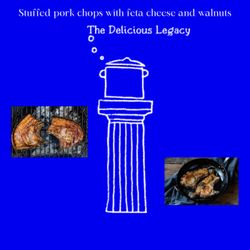
Stocking fillers: Recipe of the week - Stuffed pork chops with feta cheese and walnuts
05:02|Hello!Your recipe of the week is here!Every Saturday in The Delicious Legacy podcastEnjoy!Thom
18. Traditional Christmas around the Greek Table
26:40||Season 7, Ep. 18Hello! Christmas is approaching! Time for some recipes to inspire you in your Christmas cooking! (If you do cook of course! Otherwise, psssss, pass it on to your spouse!) It's also the time the ‘Kalikanzaroi’ (goblins that live underground all year according to Greek folklore) are coming up to Earth to annoy humans. How do you distract them? What foods do they like? So I've got a little treat for you, my curious and greedy gastronomers! On this episode of The Delicious Legacy podcast, we are going to Greece, so aside from melomakarona, stuffed chicken with rice and chestnuts, or roast piglet, what else do we Greeks ate at Christmas past? What was on the festive table in Epirus, Crete, Mani, Thrace, or even Kastelorizo? Let's re-discover some of the older, regional, and nearly extinct dishes for all corners of the Hellenic world! What is "Patoudo"? What about the dish called 'baby Jesus's "swaddling clothes"? And "babo"? What is the dish called "Gold" from the remotest Greek island to the East? These and much more on today's episode!Listen now -on all platforms that you get your podcasts from- and share with friends, family, colleagues, and rate and review! Enjoy! x The Delicious Legacy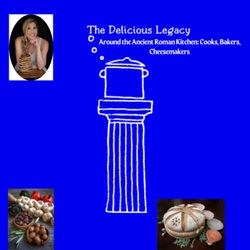
17. RE-AIR: Ancient Rome's Bakers, Cooks and Kitchens w/ Extra Content!
53:24||Season 7, Ep. 17Hello!On this classic episode from the archives of The Delicious Legacy I decided to include some ten minute of extra content from my interview with Farrell and I have remastered the audio as it was a bit dodgy the last time round. Hope it's more pleasant and easier to listen now!I'm very excited about this episode! Farrell Monaco is a culinary & experimental archaeologist, and bread-baking addict! Especially of the ancient Greco-Roman variety...So what better person to chat about the ancient cuisine? And it's a very thought-provoking and thoughtful. Who were the people (and the animals!) who did the hard work?Currently in California -where she was when we spoke online- but mostly researching in Pompeii, Herculaneum and Ostia about ancient Greco-Roman breadways.More info on bread from Pompeii by Farrell Monaco:https://www.bbc.com/travel/article/20230629-adoreum-the-newly-discovered-flatbread-fresco-of-pompeiihttps://www.bbc.com/travel/article/20230406-arculata-the-bread-that-survived-pompeiiApuleius and The Golden Ass:https://en.wikipedia.org/wiki/The_Golden_AssEtruscan Tarquinian Tombs:https://tarquiniaturismo.com/tomb-of-the-triclinium/?lang=en Farrell's website and blog:https://tavolamediterranea.com/Music by Pavlos KapralosEnjoy!Thom & The Delicious Legacy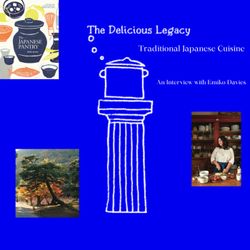
16. Traditional Japanese Cuisine
55:27||Season 7, Ep. 16Hello! New episode is out and I couldn’t be more excited about it!I've interviewed cookbook author Emiko Davies about her latest book "The Japanese Pantry" which came out in October this year.Emiko shares stories of her travels off the beaten track to meet the makers and pay homage to ancient traditions that have been around for centuries. Ingredients, dishes and recipes that are lost in the mists of time, and rare foods that might be lost forever!How do you make sake and rice vinegar? What are the sake lees and how do we use it? What is the rare delicacy of Yubeshi?We will explore the key ingredients of Japanese cuisine and on top of this, we will take a deep dive some unknown ingredients and dishes from all over the Japanese archipelago.You can follow the pensioner, mountain tea farmers who farmed at 1000 feet above sea level deep inside a forest, on Instagram at @nakaichamuraiEnjoy!Thom & The Delicious Legacy